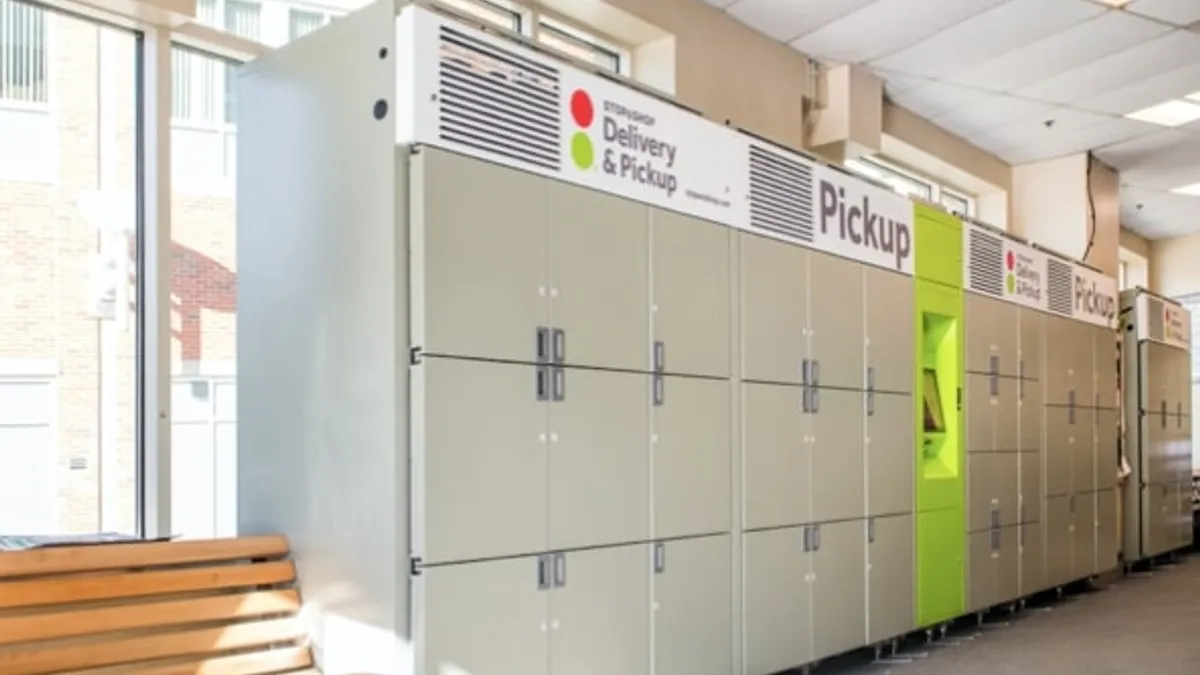Dive Brief:
- Stop & Shop has launched a pickup locker solution at a store in Boston’s Brigham Circle neighborhood, according to a company press release.
- The lockers, which contain three temperature zones, are remotely monitored 24/7 and sanitized after each use. Shoppers who place an order will receive a text within 15 minutes of their pickup time that includes a code to open their locker. Each order carries a $2.95 fee.
- As pickup popularity grows, retailers see lockers and kiosks as being particularly attractive options for urban stores where shoppers visit on foot or by bike.
Dive Insight:
Curbside pickup has taken off like a rocket over the past year, with retailers frantically reworking their parking lots and testing new iterations like drive-thru service. But companies are also curious about the potential for click-and-collect growth at stores — mainly urban ones — that serve shoppers who don’t arrive by car.
Up to this point, picking up orders at a customer service desk or another spot inside stores has been the main pickup option for these shoppers. Whole Foods stores in Seattle, for instance, have entrance signs asking shoppers to see the customer service desk to retrieve their pickup orders.
These spaces usually aren’t built to efficiently handle multi-temperature product storage, however. They can also eat up valuable in-store real estate and, depending on how busy the stores are, disrupt traffic flow.
Albertsons and now Stop & Shop have positioned their new pickup lockers as appealing to customers who prefer to walk or bike to their local store. Stop & Shop’s new pickup locker array, located at 1620 Tremont Street in Boston, appears inside the store’s main entrance. Albertsons, meanwhile, has installed two pickup lockers outside Jewel-Osco stores in Chicago along with an automated pickup kiosk outside another store in the city.
Experts say pickup units, whether automated or not, may also work well at stores that offer curbside service. They’re a time-saver, since shoppers don’t have to wait on a worker to bring out their order, and they can also offer pickup after hours. They can save retailers money on labor. And, perhaps most importantly, they turn pickup order storage into a customer-facing service that can be located away from the sales floor.
Lockers and kiosks still have a lot to prove before retailers roll them out at scale. Size limitations unit could discourage large, profitable orders. And shoppers who prefer to walk or bike may not value pickup service as much as those who can have groceries delivered to their car trunks.
Retailers are eyeing numerous innovations in pickup given the service’s surging popularity and favorable economics compared to delivery. In addition to lockers, retailers are rolling out geolocation technology that can speed order fulfillment, along with app and website enhancements to let shoppers more easily toggle between services.













